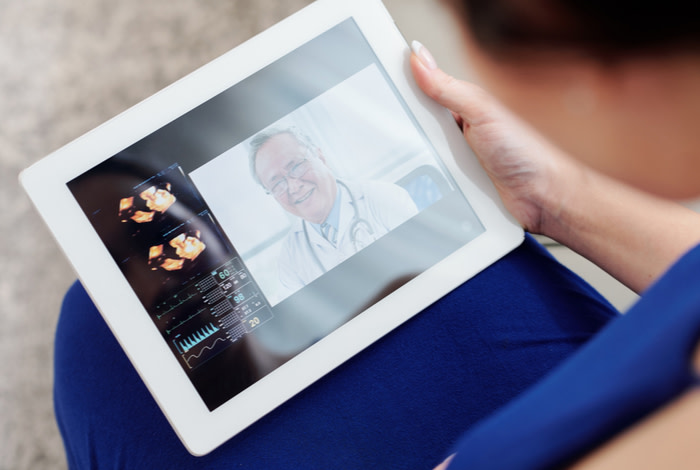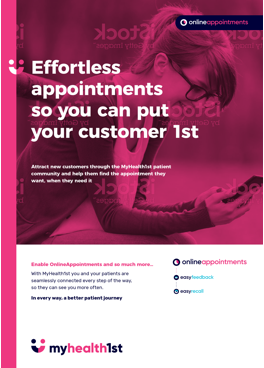
Thanks to a new $1.1 billion coronavirus program and changes to Medicare allowing for all telehealth consults to be bulk-billed, medical services now have a new and convenient way to connect with patients.
What Are the Current MBS Benefits and How do I Stay up to Date?
As it stands, the bulk-billing of telehealth appointments is a temporary measure due to run out September 2020, but as the situation and scope of the outbreak changes by the day this can change. Given the massive shift in how Australians are approaching a connected world thanks to social distancing and working from home during the pandemic, it’s likely that telehealth will become part of the new normal.
In essence, bulk-billing of telehealth services is available to all Australians during the pandemic and the government is doubling the usual bulk-billing incentive for telehealth to ensure that healthcare providers remain supported during the crisis and can offer concessions and vulnerable people free service. The doubled bulk-billing incentive also applies to face-to-face appointments.
The current MBS benefit codes are accurate as of March 31st, 2020 but as the coronavirus telehealth program is rapidly evolving, frequent visits to MBS Online may be warranted. Telehealth consults that are bulk-billed cannot have a gap payment. You can still charge your patients the full fee for an appointment, but they will not be able to claim it on Medicare. Some private health insurers may offer a rebate for telehealth consults.
What Is Telehealth?
Telehealth is the practise of remotely connecting with a patient for consultation, diagnosis and treatment. In a broad sense, any appointment that doesn’t require direct physical intervention or specialist equipment can be carried out via telehealth. Some more specialist testing or monitoring can also be performed remotely if the patient has access to telehealth medical devices, such as blood pressure and glucose monitors with online functionality capable of sending results directly to a consulting physician, nurse or specialist.
There are two forms of telehealth commonly practiced: synchronous and asynchronous.
- Synchronous telehealth refers to when you directly connect with a patient via teleconferencing, video chat or over the phone.
- Asynchronous telehealth refers to “store and forward”, a practice by which a primary care physician can capture images or video of a patient to send to a specialist for further analysis.
As specialists, it’s likely you will be involved in both kinds of telehealth, consulting for primary care physicians asynchronously and also connecting directly with patients.
What are the Benefits of Telehealth?
Until recently, telehealth services in Australia have been limited to remote communities and those with mobility or accessibility issues preventing them from easily attending face-to-face appointments, but with the advent of COVID-19, strict social distancing and lockdown, telehealth services have been made available for all. In addition to offering accessibility to patients, telehealth services have a number of benefits for both practices and patients:
- Increase in practice revenue due to expanded reach and accessibility
Telehealth consults don’t require proximity, allowing practices to engage with patients from around the country, greatly expanding the reach of the practise. The added accessibility offered to patients through telehealth services also makes it easier for new patients to engage with the practice.
- Reduced practice overhead
Previously telehealth consults required doctors to be on site at a clinic but the new legislation allows many specialists to work from home when delivering telehealth services, allowing for a practice to utilise remote workers to maximise reach while not requiring extra on-site infrastructure and spending.
- Reduced patient no-shows
Patients who book online are far less likely to miss an appointment, as are patients who book telehealth consults.
- Reduces or negated threat of COVID-19 infection
Offering telehealth consults reduces exposure to potential threats of infection, whether it be COVID-19, a seasonal flu, a measles outbreak or other virulent virus. Even if you mix face-to-face consults with telehealth appointments, the reduced number of in-person practice visits also limits possible vectors of infection. The MyHealth1st booking platform features optional COVID-19 pre-screening, allowing customers to further increase the safety of their practice.
Technological Requirements
Setting up your practice for telehealth consults may seem like a large technological hurdle, but the technology required is readily available and you will most likely have most of it on hand already. While it is possible to do some telehealth consults via Skype, Zoom, Whatsapp or other video conferencing platform, these aren’t necessarily secure, with people potentially being able to listen in to or interrupt other patient’s appointments.
No matter the platform, for video conferencing you will need a camera and either a microphone or a headset with a built in mic.
There are no specific technologies required to be eligible for MBS incentives other than the necessity that the technology or service used adheres to Australian Privacy Principles .
MyHealth1st and Telehealth
Depending on the platform you choose there may be privacy or security concerns that need to be tackled. Ideally a practice should use a secure end to end telehealth solution, such as the MyHealth1st browser-based, encrypted and fully secured solution. Our telehealth service works with most browsers and is fully encrypted so you can conduct a consult without fear of a patient’s privileged information being released. Up to four people can be involved in a consult using the MyHealth1st telehealth service, and built in tools such as a whiteboard, file transfer and screen sharing allow you to interact with patients in a meaningful way.
If you choose to use our telehealth service, there’s no need to fill in Skype information or Zoom addresses for an appointment, or to contact patients beforehand to give them the details of how the appointment will be conducted. When a patient books an appointment, both the patient and the doctor are sent an email with a unique link to the telehealth session. The link only goes active 10 minutes before the appointment is due to start and requires no third party programs or apps to run.
Telehealth Standards
Telehealth standards and guidelines for specialists don’t differ greatly from those for normal consults, but do have stricter guidelines for patient consent and adequate technology. When performing a telehealth consultation, a specialist must:
- Obtain the patient’s informed consent to participate in a telehealth consult and ensure patient confidentiality and privacy.
- Decide on the appropriateness of a telehealth consult or whether proper care requires a face-to-face consult.
- Make their identity known to the patient.
- Confirm the identity of the patient to the best of their ability.
- Explain to the patient the processes in the telehealth consult.
- Obtain and assess the patient’s medical history, condition and clinical signs to aid examination.
- Establish the patient’s current or recent use of medications, including non-prescription medications and ensure that the proposed treatment is not contra-indicated.
- Accept ultimate responsibility for evaluation of information, assessment and treatment.
- Keep an adequate record of the consultation.
There may be other mandated telehealth guidelines that must be followed for your modality, so checking with a governing body or advisory group is recommended to keep abreast of any requirements or restrictions to which you must adhere.
What Kind of Services can be Offered?
For the most part, any consultation that doesn’t require direct physical proximity or intervention is possible to offer through telehealth. Determinations of appropriateness must naturally be made on a case by case basis depending on symptoms, urgency and the type of treatment desired. What kind of services varies depending on modality, but include:
- Dermatology: Telehealth can be used to diagnose and prescribe treatment for a variety of skin conditions from rashes to swelling and beyond. WHile most skin cancer checks may require close physical inspection and/or biopsy, telehealth can be used for a visual check to gauge the need for a face-to-face appointment.
- Obstetrics: Prenatal care and monitoring from afar is possible through telehealth, though some specialist equipment may be required to fetal heartbeats monitoring and the like.
- Oncology: While much of teleoncology will likely be of the asymmetric “store and forward” kind, with primary care physicians and referring doctors forwarding images and pathology for diagnosis, oncologists can also use telehealth solutions to consult and follow up directly with patients.
- Physiotherapy: Although a face-to-face appointment may be necessary for an initial assessment depending on the severity of injury or incapacitation, patient monitoring, guidance and follow-up can easily be performed via telehealth options.
These are but a few examples of the kinds of medical services that can be delivered remotely via telehealth solutions. With few exceptions, most specialist modalities should be able to embrace telehealth as a new way to treat patients.
Register for MyHealth1st's integrated, clinically validated telehealth solution now - click here
How to Promote that your Practice Offers Telehealth
Implementing telehealth services is a great first step, but it's vital you let your patients know that you now offer this service. Letting them know how to book a telehealth appointment is equally important.
We suggest adding information to your website which links into your MyHealth1st bookings to streamline user flow and drive patient bookings. Updating your practice "on hold" recordings to inform patients they can now book a telehealth consultation with your practice online can also help patients discover the service.
Sending out a mass communication to your patients via email and/or sms informing them of this new service can help drive rapid adoption.
Don’t hesitate to reach out to the MyHealth1st team if you'd like any help with this.
Join the Telehealth Revolution
If you have any questions about implementing a telehealth service for your practice, or are interested in utilising our extensive experience to help your practice grow and thrive in these uncertain times, the team at MyHealth1st is ready to help.
